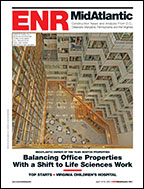The construction industry in Washington state is not ready to meet a new rule that will require some 10,000 cranes there to be inspected and certified by a licensed inspector by Jan. 1.

"Crane operators have been busy," says Hector Castro, a spokesman for the state's Dept. of Labor & Industries. "The lag has been with the cranes themselves."
So far, state regulators say that only 700 out of an estimated 10,000 cranes affected by the new rule have received operating permits. As of Dec. 16, about 2,000 operators were licensed, Castro notes.
Under the new rule, cranes of at least one ton of capacity�and their operators�will need a special state license to work on a construction site. The crane inspection must be carried out by a licensed inspector who has passed a new state exam. The state's test was developed in a partnership with the Fairfax, Va.-based National Commission for the Certification of Crane Operators.
"It's not at all unusual that there is 'ramp up' time with these sort of ground-breaking safety initiatives," says Graham Brent, NCCCO's executive director.
On Jan. 1, Washington will become the second state in the U.S. besides California to require such licenses for cranes and their operators. The rule came after a deadly tower-crane collapse in Nov. 2006 in Bellevue. A state probe found that the crane's nontraditional base, though engineered, was not inspected by a third-party prior to use on the site. The new rule requires cranes to receive a top-to-bottom structural and operational inspection at least once a year. Federal rules require an annual inspection but do not require the inspector to be licensed.
California began requiring state-monitored inspections after a deadly tower-crane collapse in San Francisco in November 1989. In 2005, California began licensing operators as well, though it took months for the industry to get its crane operators up to speed after the deadline passed.
"There are some crane operators and owners who may not be aware that they are covered under this new rule," says L&I's Castro.
Settled Scores
In related news, national crane supplier Lewis Equipment Co. has settled a lawsuit with Washington's L&I agency after regulators there shut down three tower cranes due to alleged mismatched tower sections, unclear electrical markings, a missing lockout/tagout and other deficiencies.
"We suffered irreparable harm over that whole deal," says Bob Reitz, engineering manager of the Grand Prairie, Texas-based crane company. Lewis had erected two China-made cranes in Seattle last year using tower sections from Terex-Comedil, an Italy-based crane manufacturer. Amid a spate of deadly crane accidents around the country, L&I ordered Lewis to shut down the cranes and fined the company for safety violations.
"Everybody was so busy," Reitz says. "We were like running at 100% utilization and running short of towers." The company has since been hit hard by the recession, prompting it to file for Chapter 11 bankruptcy protection in September.
Moving forward, it will be more difficult for crane owners to mix and match crane parts. Although Lewis had obtained approval from a licensed structural engineer and had previously erected its cranes in the same way in California, Nevada and Texas, L&I regulators wanted more proof that the setup was safe. They now require so-called "hybrid" cranes to come with approval from all applicable manufacturers as well as a stamped set of drawings.
"Also, a Washington state licensed engineer has to approve the modified design," says Elaine Fischer, an L&I spokeswoman.
As part of the settlement, she adds, Lewis has agreed to pay the state $5,600 in fines.



Post a comment to this article
Report Abusive Comment